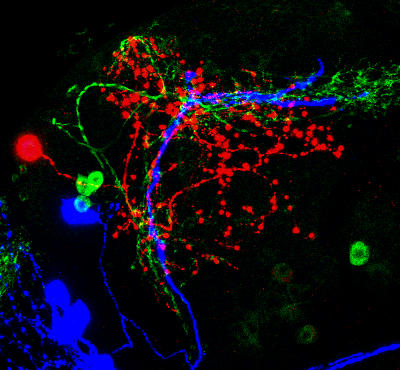Using AI to control energy for indoor agriculture
30 September 2024
Published online 4 March 2016
How our brain cells communicate to wake us up or send us to sleep.

© Justin Blau / Nature Neuroscience
The team used a genetic screen to find signals required for normal sleep/wake cycles in the fruit fly. They identified a set of neurons that produce the neuropeptide leucokinin. These leucokinin neurons then communicate with neurons that produce the leucokinin receptor that, in turn, reach the areas of the brain that control activity and sleep.
Using calcium imaging to measure neuronal activity, the researchers found that clock neurons act to impose rhythms on the excitability of both leucokinin and leucokinin receptor neurons. The researchers also found that clock neurons affected rhythmic activity in a separate pathway in neurons that produce the DH44 neuropeptide. This suggests that transmission of electrical rhythms from clock neurons is a general mechanism, which works through multiple circuits to organise circadian rhythms.
“This tells us how the brain is working: transferring and preserving information as signals are transmitted along neural circuits deep into the brain,” says Justin Blau, Professor of Biology at New York University and lead researcher on the team. “What we’d like to know more about now is what’s actually happening in leucokinin neurons to affect their excitability when these clock neuron signals come in.”
doi:10.1038/nmiddleeast.2016.22
Cavey, M. et al. Circadian rhythms in neuronal activity propagate through output circuits. Nature Neurosci. http://dx.doi.org/10.1038/nn.4263 (2016).
Stay connected: